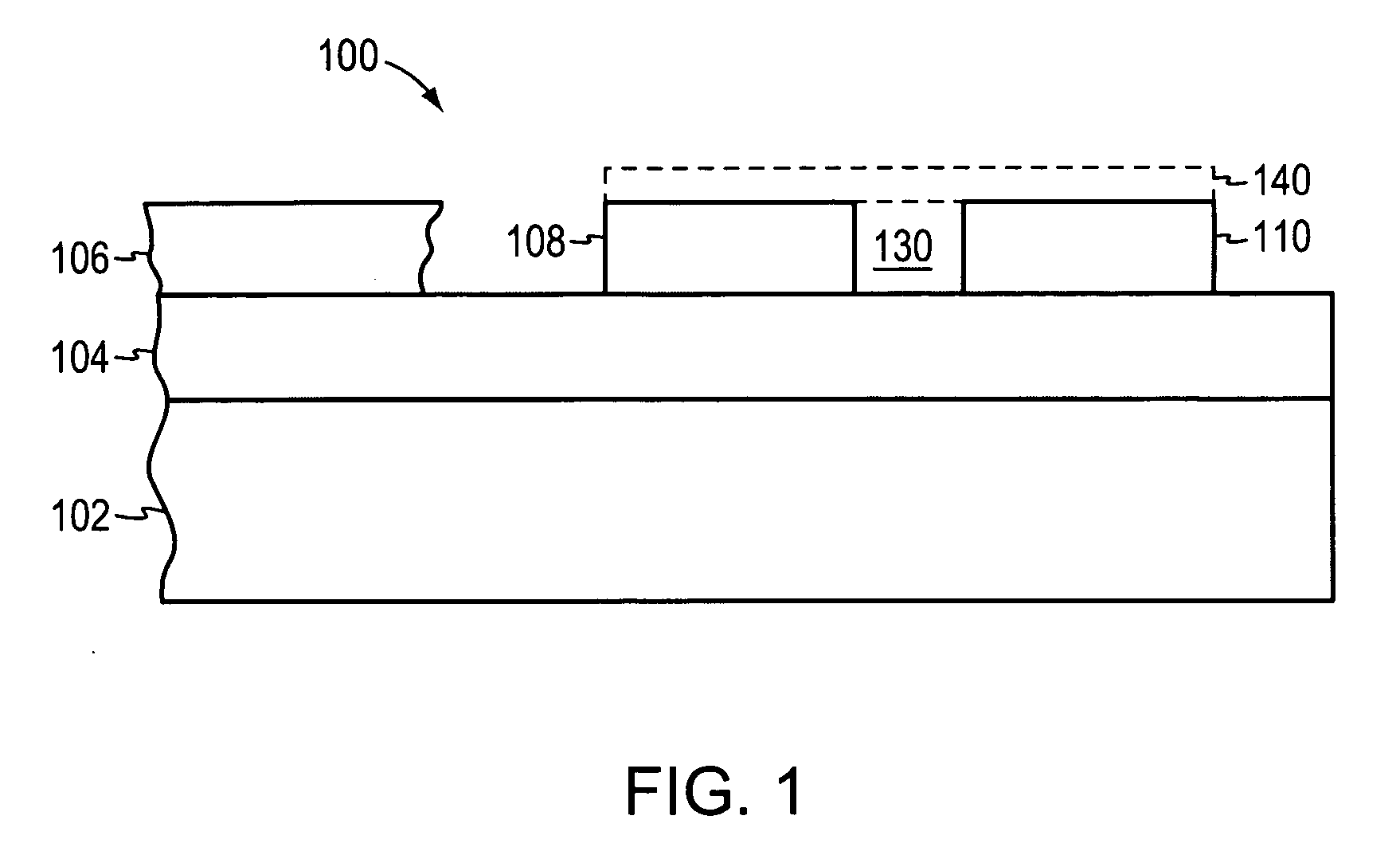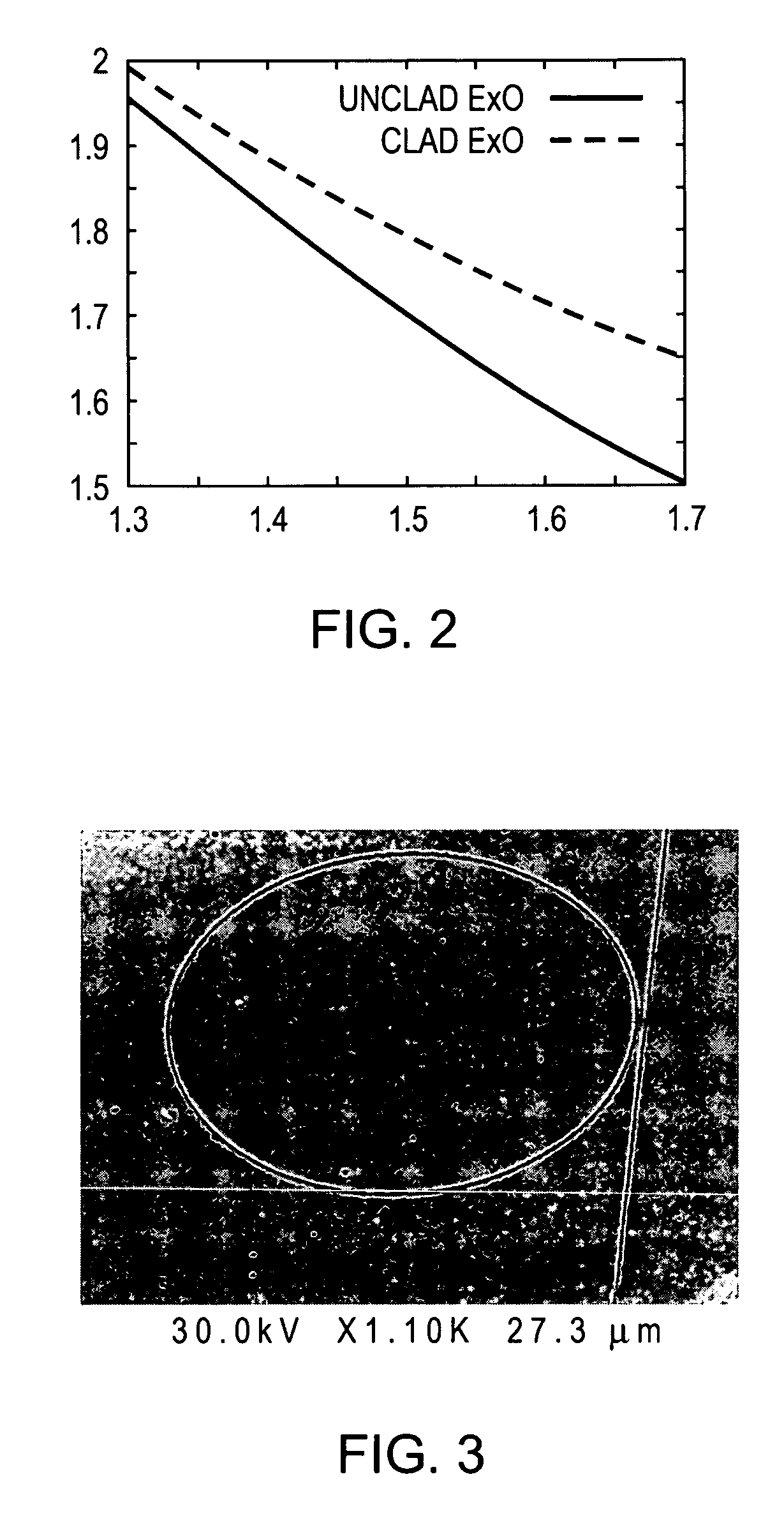Bremsstrahlung laser ("blaser")
a laser and beam beam technology, applied in the field of lasers, can solve the problems of large, complex apparatus, and high cost of laser radiation generators, and achieve the effect of improving the probability of electron tunneling
- Summary
- Abstract
- Description
- Claims
- Application Information
AI Technical Summary
Benefits of technology
Problems solved by technology
Method used
Image
Examples
example 1
High-Q Ring Resonators in Thin Silicon-on-Insulator
[0058] Resonators comprising high-Q microrings were fabricated from thin silicon-on-insulator (SOI) layers. Measured Q values of 45 000 were observed in these rings, which were then improved to 57 000 by adding a PMMA cladding. Various waveguide designs were calculated, and the waveguide losses were analyzed.
[0059] Microring resonator structures as laser sources and as optical filter elements for dense wavelength division multiplexing systems have been studied in the past. The silicon-on-insulator (SOI) structure described here is particularly advantageous. It has low waveguide loss. One can extrapolate an uncoupled Q value of 94 000 and a waveguide loss of 7.1 dB / cm in the unclad case, and −6.6 dB / cm in the PMMA clad case, from the respective measured Q values of 45 000 and 57 000. Although higher Q values have been obtained for optical microcavities, we believe that our geometry has the highest Q for a resonator based on a singl...
example 2
High-Q Optical Resonators in Silicon-on-Insulator Based Slot Waveguides
[0067] We now describe the design, fabrication and characterization of high Q oval resonators based on slot waveguide geometries in thin silicon on insulator material. Optical quality factors of up to 27,000 were measured in such filters, and we estimate losses of −10 dB / cm in the slotted waveguides on the basis of our resonator measurements. Such waveguides enable the concentration of light to very high optical fields within nano-scale dimensions, and show promise for the confinement of light in low-index material with potential applications for optical modulation, nonlinear optics and optical sensing. As will be appreciated, the precise geometry of a resonator (or other kinds of devices) is frequently a matter of design, and the geometry can be varied based on such considerations as length of waveguide, area of a chip, and required interaction (or required non-interaction), such as coupling (or avoiding coupli...
examples 1-4
Four-Wave Mixing in Silicon Waveguides with χ3 Polymer Material
[0083] Two types of integrated nano-optical silicon waveguide structures were used for this demonstration. The first type of structure was a series of ring resonator structures, which allowed an estimation of the waveguide loss of the nonlinear material. The second type of structures used were long runout devices, which comprised a simple waveguide loop with distances on the order of 0.7 cm. Characterization of loss could be done passively.
[0084] For the actual nonlinear testing, a Keopsys EDFA was used to boost two lasers to a high power level, on the order of 30 dBm (1 Watt) or more.
[0085] The materials used for the demonstrations were clad on waveguides configured as previously described herein. The chromophore identified as JSC1 is shown by its chemical structure in FIG. 27. The chromophores identified as JSC1 and YLD 124 are two substances among many chromophores that were described in a paper by Alex Jen, et al....
PUM
 Login to View More
Login to View More Abstract
Description
Claims
Application Information
 Login to View More
Login to View More - R&D
- Intellectual Property
- Life Sciences
- Materials
- Tech Scout
- Unparalleled Data Quality
- Higher Quality Content
- 60% Fewer Hallucinations
Browse by: Latest US Patents, China's latest patents, Technical Efficacy Thesaurus, Application Domain, Technology Topic, Popular Technical Reports.
© 2025 PatSnap. All rights reserved.Legal|Privacy policy|Modern Slavery Act Transparency Statement|Sitemap|About US| Contact US: help@patsnap.com



